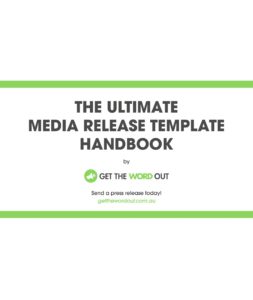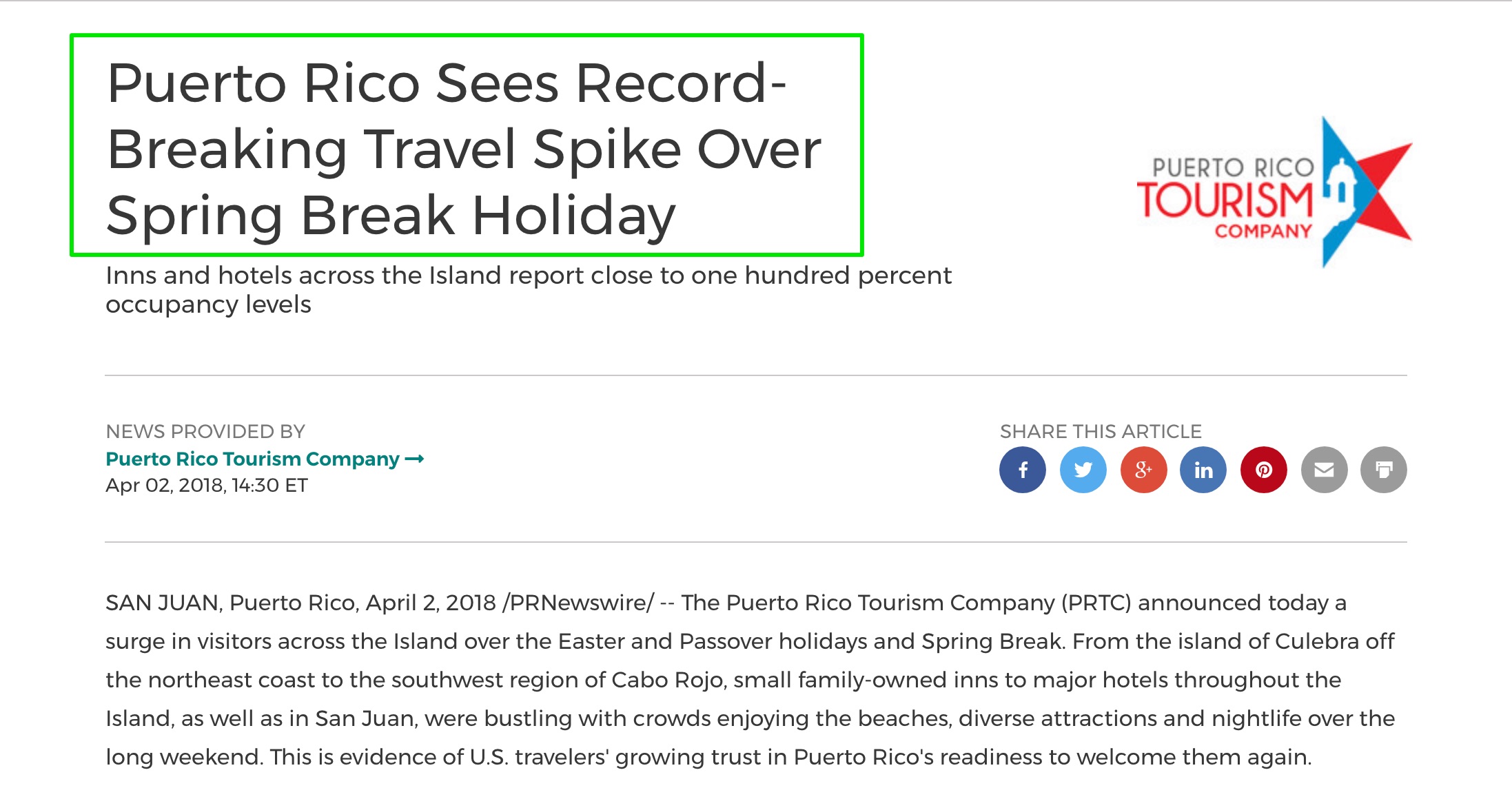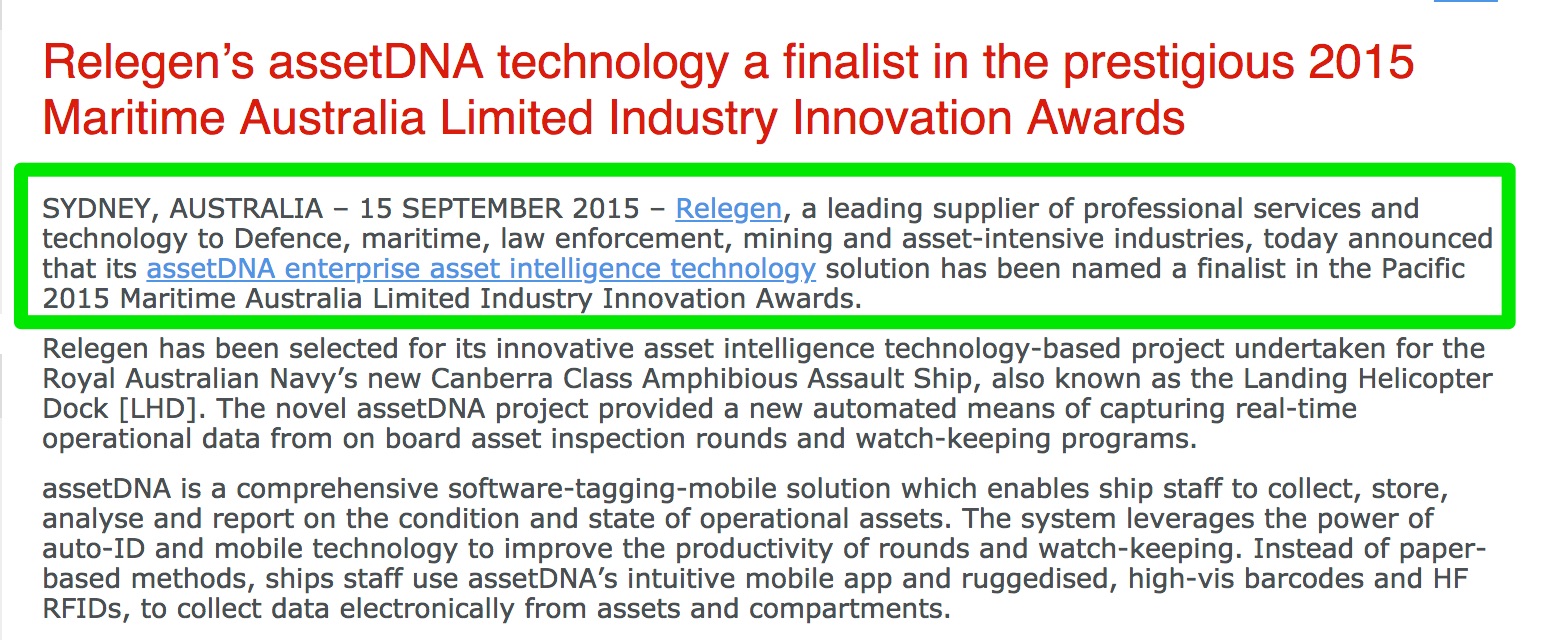THIS PAGE HAS TWO IMPORTANT PARTS
1.) Advice on how to write press releases
2.) 76 Press release examples, samples, and templates available for free download.
Our free download includes dozens of media release templates. If you scroll down the page you’ll see the big yellow “Download Now” button. It’s totally free.
If you’re looking for help on how to write a press release, keep reading.
I’m going to show you how to write a polished media release from scratch AND get your media release published. You don’t need to have a university degree to do this, anyone can write a professional media release if you follow a systematic process.
Firstly, we’re going to break down the structure of the media release to ensure you know about all the moving parts.
Secondly, we’re going to go deep on the inner workings of the release so you know exactly what to say, how to say it and who to say it to.
In this easy to follow, step-by-step guide, we’re going to get you up to speed on writing your very own media release.
6 WAYS WRITING A MEDIA RELEASE
CAN BRING ‘BUZZ’ TO YOUR BUSINESS
You may think the only benefit you can get out of writing a media release is having it published.
While this is an achievement in itself, there are so many more benefits a media release can bring to your business:
- MASSIVE potential viewership and brand awareness.
- Media releases help build those all important links!
- Assert yourself as an authority figure in your industry.
- Increase traffic to your website.
- Keep your audience informed about happenings in your industry.
- Become a recognised voice within your local media.
BEFORE YOU START!
STOP!
Don’t start writing just yet. Let’s take a moment to figure out why we are going down this path.
Before you begin writing a single word, you must ask yourself some important questions.
- Is my story actually newsworthy?
- What am I trying to achieve by writing this media release?
- Is a journalist going to read or delete my email?
Asking yourself these questions will ensure that you are writing a media release for the right reasons.
If you don’t have a newsworthy topic, don’t worry!
Forcing out a media release on a topic that has no substance is the worst thing you could do.
You should also consider your purpose for writing a media release.
- Is your release trying to educate the reader on a particular issue?
- Are you announcing changes to your company?
- Do you want to promote an event you are organising in your local area?
Your media release should have a clear purpose which can easily be picked up by the reader. If the reader can’t see a clear point to your media release, it is unlikely they will spread the word to their friends.
Write For SOMEONE, Not EVERYONE
Research your target audience.
Having a newsworthy topic is one thing, but knowing who will be reading your media release is essential before you start writing. Doing a bit of research on your reader will pay dividends when writing your release.
If you understand how your reader digests their news, you will be able to write your release in a way your audience will be receptive to.
Once you have a topic that is newsworthy, have established a clear purpose for your article and understand who you will be writing for, you’re on track to writing a gold standard media release!
HOW NOT TO FORMAT LIKE A CHUMP:
MEDIA RELEASE FORMATTING
You know when you wake up in the morning, get ready for work, but forget to brush your teeth?
DO NOT, forget to brush your teeth when writing a media release! What I’m talking about, is formatting.
Let’s take a look at what you need to do to be seen as a professional.
Adding your businesses logo neatly in free space at the top of the page will clearly show the reader who you are. Try to attach the highest resolution image you can get to your release as this will look the most professional.
‘Media Release’ needs to be clearly stated at the top of the page to identify the nature of the document.
You need to state when the news release is available for use. If the news release can be used immediately, use the term ‘For immediate release’.
If you need to time the release or place an embargo on it, clearly mark as ‘EMBARGO’.
Not, for release before TIME, DATE’.
You shouldn’t ever need to use an embargo unless your topic needs clarification prior to the release or needs to be released on a specific date. Editors do not necessarily look favourably on an embargo, as this means they have to keep your release on file.
You need to state when the media release was sent to the media. Including a date is essential as it time stamps information.
HOW TO IMMEDIATELY CAPTURE READERS’ ATTENTION:
THE HEADLINE
This is where all the fun begins!
It is ABSOLUTELY vital that you have a compelling headline.
This is the bait on the end of your fishing line. Without the right bait, you won’t get any bites. The headline should give a clear indication of the releases topic and show your angle on the story.
Let’s take a look at what makes a good headline.
Don’t overthink it! Keep your headline short, sweet and to the point. There is nothing worse than a long, drawn out headline, full of sensationalist language.
Whilst it might sound great, a media release should not include emotionally charged language, especially in the headline.
On the other hand, you might have a short headline, but if it does not outline your topic and angle of the story, you will not capture the readers attention.
SAY IT LIKE YOU MEAN IT
Think back to your topic and the purpose for your media release.
Your title should encompass the main message you are trying to get across in an interesting way.
Try to elicit an emotional response from the reader.
You can blend fact and humour but make sure you keep your headline focused on your topic.
If you are racking your brain but can’t think of a headline right now, don’t stress!
Headlines can take time to think of.
And since they are the most important part of your release, it will pay dividends to brainstorm ideas and not put any old headline at the top of your release.
Check out what the experts think a headline needs in this awesome article by prdaily.com.
MAKE YOUR HEADLINE LOOK LIKE THIS
Write your headline in title case, not all caps.
Ideally, aim for 7 to 12 attention grabbing words that carry a powerful, yet intriguing message.
You may think that writing a headline in all caps will jump out at the reader and grab their attention. This is a sure fire way to do exactly the opposite! Writing a headline in caps makes it hard to read and is obnoxious to say the least.
Here’s an example of what an attention grabbing headline should look and read like.
See how the headline grabs your attention with strong language, using words like ‘record breaking’ and ‘travel spike’.
Just by reading the headline, you already have a pretty clear idea of what the media release is about.
Now for some fun! Go and brainstorm some ideas and create a list of potential headlines.
Once you’ve done that, go through your newly created list and think about the questions you asked yourself at the start of the process.
Cull your list of headlines and pick one that aligns with your overall message and will grab your readers attention.
LOCK YOUR READER IN: THE LEAD
When you begin to think about the lead, think about someone taking you somewhere for the first time.
Naturally, your going to have a lot of questions, right?
This is the same for your media release. Once you get your reader locked in with your amazing headline, they’re going to WANT to know more.
So, give it to them!
The lead contains the most important information in the release and clearly indicates the angle you are taking. Specifically, your new six best friends WHO, WHAT, WHEN, WHERE, WHY and HOW.
SO WHAT MAKES A PERFECT LEAD?
Before you begin writing the brunt of the release, consider the inverted pyramid framework.
This framework is widely used in media release writing and states that the most important information should be at the beginning, with all of the information after it being less important.
Hitting the reader with your juicy information immediately, instantly gains their interest.
Here is an example of an expertly written lead so we can break it down.
If we consult our six best friends this is the information they give us:
WHAT – Relegen is a finalist in the Pacific 2015 Maritime Australia Limited Industry Innovation Awards
WHERE – Sydney, Australia
WHY – Its DNA intelligence technology is being recognised for an award
HOW – Maritime Australia Limited Industry Innovation Awards selected Relegen’s technology to be recognised
WHEN – 15th of September 2015
WHO – Relegen
Pro Tip: The opening line of the media release should include the dateline. The beginning of the dateline should include the city and state where the release is being written. Then include the month, day and year the release will be published.
Just from reading the lead of this media release you get a pretty good idea of what it’s about.
If you can’t fit all of this information into the first sentence, don’t sweat it! In the next paragraph, include the remaining information.
So, now you know exactly what to include in your lead, go and write that thing! Your lead should be no more than 30 to 40 words MAX. As the lead is one or two paragraphs, you do not want to write 200 words and risk boring your reader.
Pro Tip: Make sure you are writing in third person and are using an active voice!
It’s as easy as that!
SHOW YOUR READER THE WAY: BODY COPY
So, now you’ve drawn your reader in with a fantastic headline.
And your lead has gained their interest.
You can now provide the reader with other relevant information you think they need to know.
As I stated in the previous section, the second paragraph can include the rest of the 5 W’s and H if it didn’t fit nicely into the lead. The paragraphs after the lead should expand on the 5 W’s and provide additional information to support your angle.
Take a look at the example below and how the writer has effectively expanded on the lead:
See how the writer has expanded on the points raised in the lead?
They explain a bit more about the technology to give the reader a deeper understanding of what Relegen is being recognised for.
Pro Tip: Remember the inverted pyramid concept? Keep this in mind as you are writing, ensuring the most important information is at the beginning of the release.
Make sure the information in these paragraphs are still adding value to the story to keep your reader interested till the end of your media release.
YOU CAN QUOTE ME ON THIS:
THE EFFECT OF QUOTATION
Are you ready for a game changer?
Sure you are!
Quotations from people who are directly involved and relevant to your release are essential.
Quotations significantly increase the credibility of your release and provide the reader with alternate viewpoints from people of authority.
You also create a perception that you are writing from a position of authority on the topic.
Take a look at the example quotation below:
Easy right? Just include some quotation marks here and some commas there.
WRONG! I know nobody likes to be a grammar nazi. But you HAVE to be one.
Correct grammar and punctuation can make or break your release, especially in the eyes of highly trained journalists or media publications.
THE TRIPLE A (AAA) FRAMEWORK
To never have your grammar scrutinised, remember the triple A (AAA) framework:
Always use quotation marks! DO NOT forget quotation marks as they signify the opening of dialogue in the release.
Always put the comma INSIDE the quotation marks. This separates the dialogue from the tagline and lets the reader know what is being said and by who.
Always attribute the person you are quoting by including their business name and their personal name.
If a quote ends a sentence, the final punctuation must be included inside the quotation marks. The period is placed here as it signifies the end of the sentence and the quotation itself.
Get permission to use quotations!
It would be disastrous if you wrote a beautiful media release, had it published, and the person you quoted reacted negatively because you did not get their permission.
This would tarnish the credibility not only of your article, but of you or your business.
Pro Tip: When introducing a new speaker in the release, ensure you introduce them in the same way that I showed you in the above example. Not doing this will indicate that the same person has been quoted in the release.
Now that you have successfully written your first body paragraph and added quotations, feel free to add more paragraphs and quotations to your release.
Remember, each paragraph is self contained and should be spaced out neatly.
Pro Tip: Don’t go overboard with information in the release. Media releases should only be a maximum of two pages and must include space for a boilerplate and contact details.
ENDING THE MEDIA RELEASE
Once you have finished writing the body copy of your release you must finish with ‘Ends’ or three pound signs (###). This signifies the end of the release.
Boilerplate
It is important to include one or two sentences about your company at the end of the release and should look similar to this example about CVS health:
As you will be contacting journalists and news publications, they probably won’t know who you are.
The journalist will want to know who the media release is from and have some background so they can do some research of their own.
Contact Information
You MUST provide media contact details for journalists or news publications to reach out to you.
Details of your name, organisation, website, phone number and email address must be provided at the end of the release. Ensure this is easy to read and clearly stated similar to this example:
You should make it as easy as possible for yourself to be contactable.
As the old saying goes, “News never sleeps”, so you must be reachable at any time.
Even if you get a call at 3 in the morning, it will be worth it!
FINISHED WRITING YOUR RELEASE?
Congratulations!!
By now, you should have crafted your very own media release and have it ready for distribution.
So, let’s do something with it!
Get your media release to the Australian media. Send it to radio, newspapers, magazines, specialist writers and more. Find out more…
Download Your Free List of Get The Word Out Templates
You are more than welcome to download and use the headings in the list that we have compiled. Use them “as is” or edit them to suit your requirements.
Click on the following heading and subheading template samples
Book Launch Samples
Book Launch Template
Business
- Company Acquisition Templates
- Company Acquisition Sample
- Business Awards Template
- Business Awards Sample
- Board of Directors Announcement Template
- Board of Directors Announcement Sample
- Announcement of Fair or Event Template
- Announcement of Fair or Event Sample
- Announcement of New CEO Template
- Business Closing Down Template
- Launch of Charity Initiative
- Business Calls for Change Sample
- New Employee Hiring Announcement Template
- Business Announces New Partnership Template
- Business Announces New Partnership Sample
- Business Launches New App Template
- Business Launches Subsidiary
- Business Launches New Service Template
- Business Launch Campaign Sample
- Business Announces Merger Template
- Business Announces Milestone Template
- Business Announces Milestone Sample
- Business Announces New Company Name Template
- Business Announces New Location Template
- Business Announcing Press Conference Template
- Product Launch Template
- Staff Promotion Template
- Business Announces New Program Sample
- Resignation Announcement Template
- Retirement Announcement Template
- Store Grand Opening Announcement Template
- Ribbon Cutting Event Announcement Template
- Stock Exchange Listing Sample
- Survey Data Announced Sample
- Campaign Launch Template
Charity Templates and Samples
Entertainment Industry Templates
Events
Fashion
Gallery
Health
Hospitality
Organisation Templates
Sports
Technology Media










